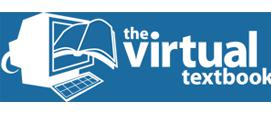Measures
Students are required to be familiar with, and confident in, the use of different forms of measure. This includes different types of measure as well as the different units used. This resource package contains activities designed to support the teaching and learning of the use of measures such as mass, length, time, money and other measures, including the use of decimal quantities.
Visit the secondary mathematics webpage to access all lists.
Time and Timetables
The textbook, Time and Timetables begins by explaining the basics of telling the time, converting between the twelve and twenty four hour clock and looking at units of time, for example how many days are in each month. This will be useful for some ability levels whilst for others, later activities may be more appropriate. The later sections, timetables and time problems in context are more challenging and demand students read, interpret and use information to answer questions and solve problems.
The activities file contains four tasks designed to challenge students to use these skills to explore and investigate different situations. The first task is an exploration of the Gregorian calendar and the actual length of a year. The second requires students to use an algorithm to find on which day of the year certain dates fall and the third activity is similar in that the algorithm works out the date on which Easter falls each year. The final activity asks students to plan journeys by public transport whilst on holiday in Scotland.
Money and Time
The textbook, Money and Time contains explanations, examples and exercises beginning with basic arithmetic using the context of money. The next measure discussed is 'time', in which students are required to convert between the twelve and twenty four hour clock, calculate the length of journeys given the start and finish times and combines time and money in the context of rates of pay.
The importance of being fluent in these skills is brought to the fore when placed in a realistic context. The activities file contains three activities. The first requires students to choose items from a menu which obeys given criteria. In the second students find their way through a maze by comparing rates of pay. The third involves reading a timetable to calculate journey times.
Units of Measure
I have found very few students to be confident when estimating weights, capacities or distances. The textbook, Units of Measure requires students to do just this, but gives a very useful list of common measurements upon which students can base their estimates. Students are required to estimate heights, lengths, masses and capacities using metric units. The following section gives explanations, examples and exercises requiring students to convert between metric units. The tasks are then repeated, but this time using Imperial units of measure before progressing to ask students to convert between metric and imperial units. The final section requires students to solve problems in a variety of contexts such as how many 50ml glasses can be filled from a one gallon can and how many times will a wheel of diameter of twenty eight inches rotate when travelling one kilometre.
The activities file contains an activity in which students are asked to estimate their own volume and a second which explores a variety of less common units of measure such as barrels of oil and hectares and also considers exchange rates and fuel consumption.
Bank Balance
Bank balance is a game which gives students practice in working with money, entering items onto a bank statement and calculating the balance. To play the game, cards are placed face down in a pile. Students then take turns to turn over a card, enter the value in the correct column of the bank statement, and work out the balance. The winner is the person with the highest balance when the cards run out.
Measurement
Pack one contains a large selection of simple activities ideal for use as starter or practical activities. Snails’ Trails demands that students measure accurately to the nearest millimetre, Time Bingo is a game designed to allow students to practise reading time, 24 Hour Bingo is the same activity but using the twenty four hour clock and Watching Weights is a matching exercise.
Pack two contains more challenging activities. About How Much requires students to estimate weights, whilst Good Guesswork asks students to estimate lengths. Thermometer Readings provides students with practice of reading temperatures from a thermometer and Room to Move asks students to investigate how much room an average person takes up.
Accuracy of Measurements
This video shows students working in groups using non-standard units to measure things in and around their classroom. After measuring the height of the door in pencil cases, the width of the whiteboard in shoes and the length of the corridor in 'Bens', the class arrive at some conclusions about the bounds of accuracy that can realistically be claimed for different units of measurement. This video could be used as teacher inspiration for designing a similar lesson or parts of the video could be used to introduce a similar task and compare conclusions drawn from the activity.
Time: Clocks - Analogue and Digital
This excel file from The Virtual Textbook contains a great range of examples to explore analogue clock faces, converting between 12- and 24-hour times, reading information from a timetable and finding angles between the hands of an analogue clock.





